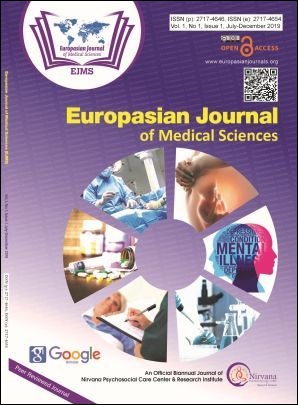Prevalence of Antenatal Care Practice among Marginalized Community of Nepal
Abstract
Background: The government of Nepal aims to improve the health of mothers and newborns by providing quality safe motherhood services. Increasing access and utilization of antenatal care (ANC) services are the first steps towards improving maternal and neonatal health outcomes, particularly those of the marginalized communities.
Objective: The aim of this study is to assess the prevalence and factors associated with the antenatal care visits among the marginalized community of Nepal.
Methods: A mixed-method study was conducted among 202 reproductive aged females of marginalized community in Nepal having childbirth during the last 2 years. Pre-tested semi-structured questionnaires and key informant interview guidelines were used for the collection of data. Bivariate and multiple regression analysis were carried out to find out the factors associated with the antenatal care visits. For qualitative data, thematic analysis was done.
Results: More than half (56.9%) of the participants had completed four or more antenatal care visits. Mothers with primary level of education were 2.7 times more likely to complete four or more ANC visits (AOR: 2.7, CI: 1.09-7.07). Age at marriage (AOR: 2.3, CI: 1.08-5.22), women who took decisions alone for their health (AOR: 2.9, CI: 1.22-6.96),exposure to FCHV (AOR:2.5, CI: 1.1-5.9), knowledge about safe delivery incentive program (AOR: 3.6, CI: 1.46-9.0) and perception of “good quality” ANC service(AOR:7.5, CI: 3.3-17.1)were significantly associated with the number of ANC visits.
Conclusion: The overall utilization of antenatal health services was low. So, there is a need of different community based maternal health programs especially targeting the marginalized females.
Downloads
Downloads
Published
How to Cite
Issue
Section
License
The author(s) retain the ownership of the copyrights for their work published in EJMS without any restrictions. Upon submission, the author(s) grants EJMS a license to publish, including to display, store, copy, and reuse the published content.
License to Publish
By submitting a manuscript to EJMS, the author(s) grant the journal a non-exclusive license to:
- Publish and distribute the content in all formats, media, and platforms (both existing and future), while identifying EJMS as the original publisher.
- Reproduce, display, and store the content in both print and online formats, including institutional and digital repositories.
- Translate, adapt, and summarize the work, including reprints, extracts, and abstracts.
- Develop derivative works based on the original content.
- Include the work in electronic databases and provide links to third-party materials.
Creative Commons Licensing
In addition to EJMS’s publishing rights, authors grant third parties the right to use, share, and distribute their work under the Creative Commons Attribution 4.0 (CC BY 4.0) International License. This allows unrestricted use of the content, provided proper attribution is given to the original author(s) and the journal.

